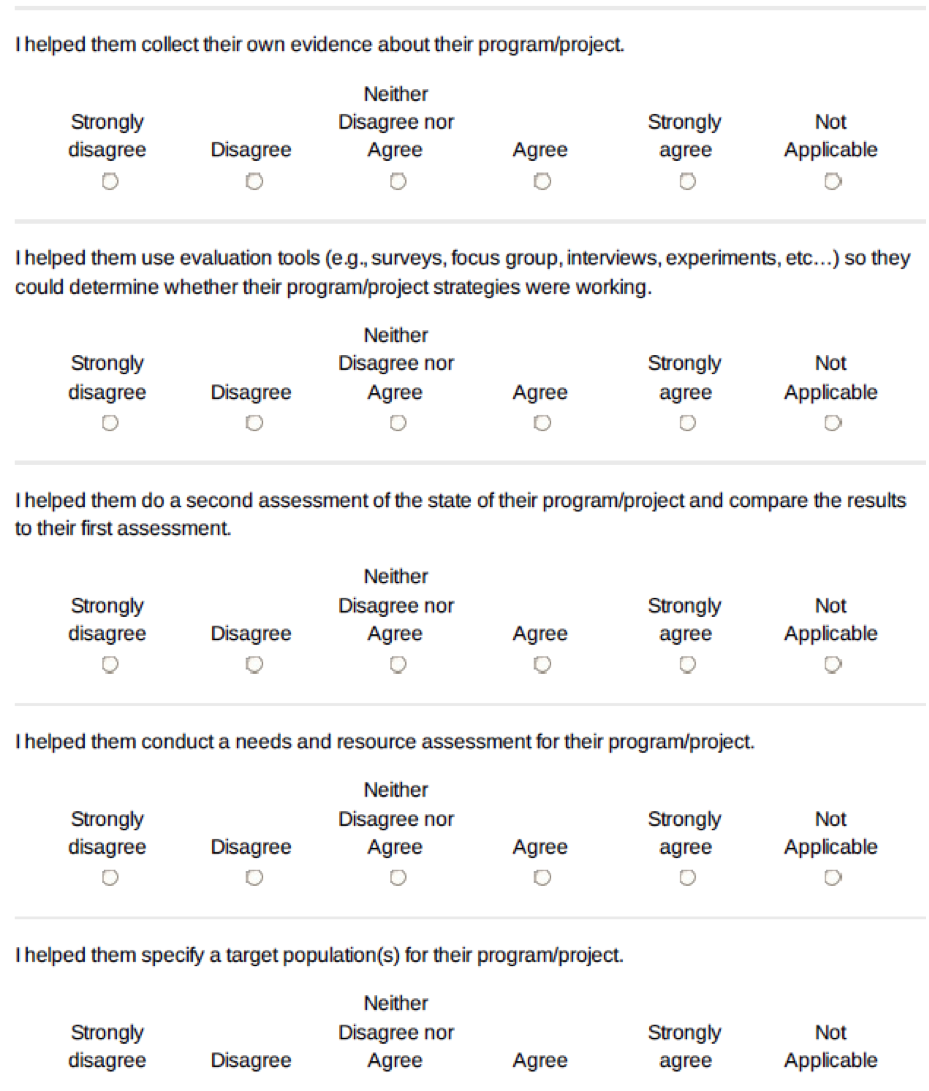I’m Jeff Sheldon from the School of Social Science, Policy, and Evaluation at Claremont Graduate University and today I’m introducing the Survey of Empowerment Evaluation Practice, Principles, and Outcomes (SEEPPO). I developed SEEPPO for my dissertation, but more important, as a tool that can be modified for use by researchers on evaluation and evaluation practitioners.
For practitioners, SEEPPO is an 82 item self – report survey (92 items for researchers) across seven sections (nine for researchers).
- Section one items (“Your evaluation activities”) ask for a report on behaviors in terms of the specific empowerment evaluation steps implemented.
- Section two (“Evaluation Participant Activities”) asks for observations on the evaluation – specific behaviors of those engaged in the evaluation as they relate to the empowerment evaluation steps implemented.
- Section three (“Changes you observed in individual’s values”) asks for a report on changes in evaluation – related values by comparing the values observed at the beginning of the evaluation to those observed at the end of the evaluation.
- Section four items (“Changes you observed in individual’s behaviors”) ask for a report on changes observed in evaluation – related behavior and whether the sub-constructs characterizing the psychological well- being outcomes of empowerment (i.e. knowledge, skills/capacities, self-efficacy) and self – determination (competence, autonomy, and relatedness) were present by comparing observed behaviors at the beginning of the evaluation to those at evaluation’s end.
- Section five (“Changes you observed within the organization”) items ask for a report on the changes observed within the organization as a result of the evaluation by comparing various organizational capacities at the beginning of the evaluation to those observed at evaluation’s end.
- Section six (“Inclusiveness”) asks about the extent to which everyone who wanted to fully engage in the evaluation was included.
- Section seven (“Accountability”) items ask about who the evaluator was accountable to during the evaluation.
- Lastly, the items in sections eight and nine, for researchers, ask about the evaluation model used and demographics.
This is a brief “snap-shot” of SEEPPO. Item development was based on: 1) constructs found in the literature regarding the three known empowerment evaluation models and their respective implementation steps; 2) the ten principles (i.e., six process and four outcome) of empowerment evaluation; 3) the purported empowerment and self – determination outcomes for individuals and organizations engaged in the process of an empowerment evaluation; and 4) constructs found in the humanistic psychology literature on empowerment theory and self – determination theory.
Hot Tip: Theresults of SEEPPO can be used to: determine whether you or your subjects are adhering with fidelity to the empowerment evaluation model being implemented, the principles of empowerment evaluation in evidence, and the likelihood of empowerment and self – determination outcomes.
Rad Resource: Coming soon! SEEPPO will soon be widely available.
The American Evaluation Association is celebrating CP TIG Week with our colleagues in the Community Psychology Topical Interest Group. The contributions all week come from CP TIG members. Do you have questions, concerns, kudos, or content to extend this aea365 contribution? Please add them in the comments section for this post on the aea365 webpage so that we may enrich our community of practice. Would you like to submit an aea365 Tip? Please send a note of interest to aea365@eval.org. aea365 is sponsored by the American Evaluation Association and provides a Tip-a-Day by and for evaluators.

